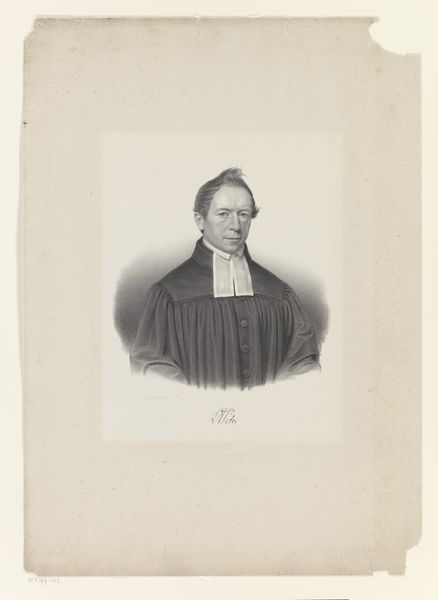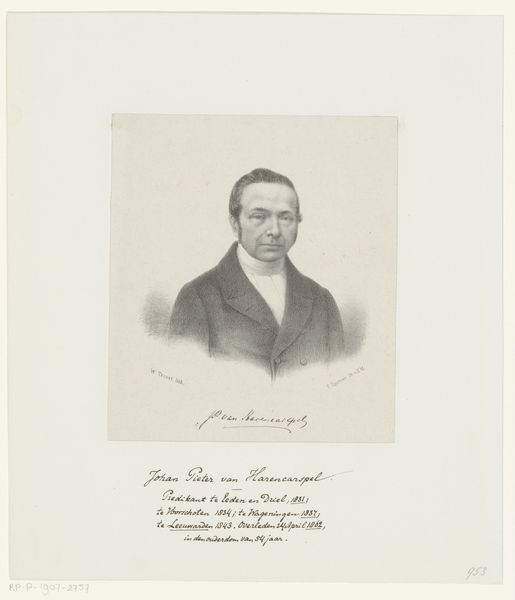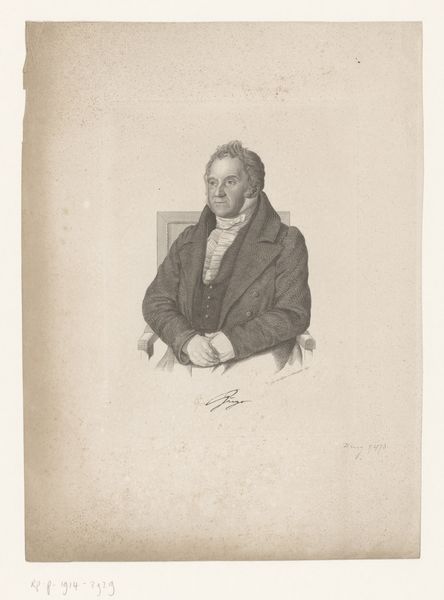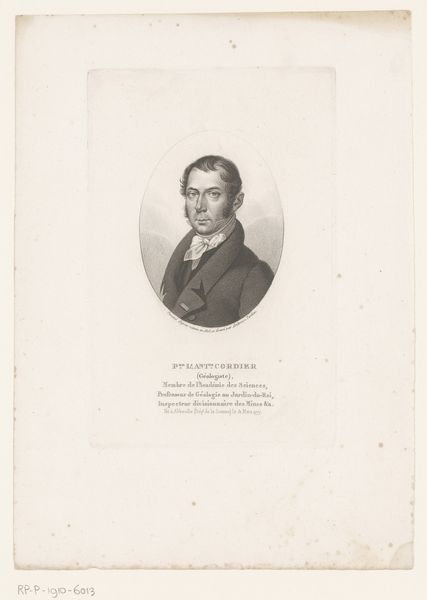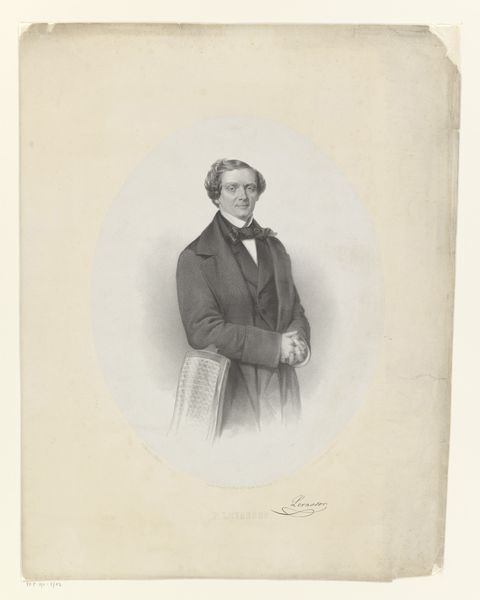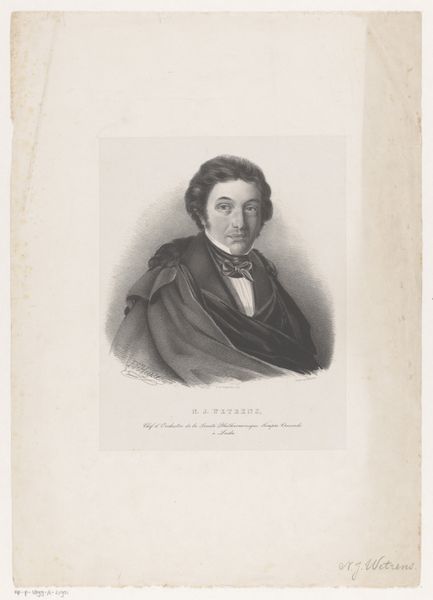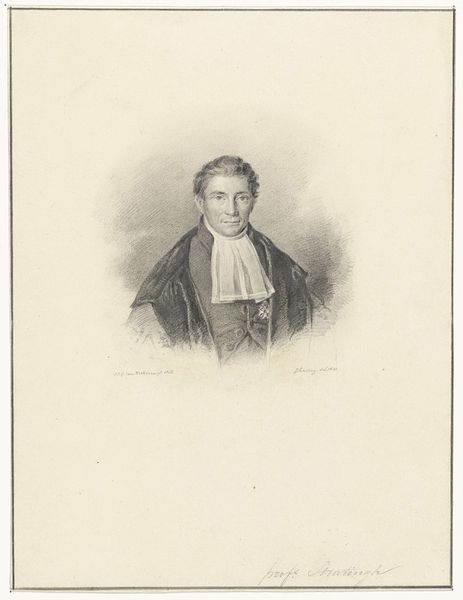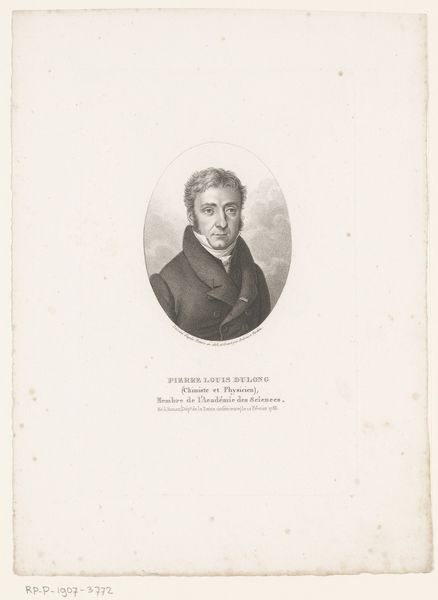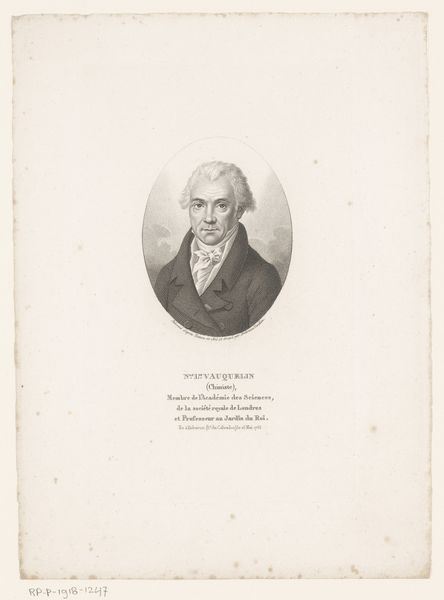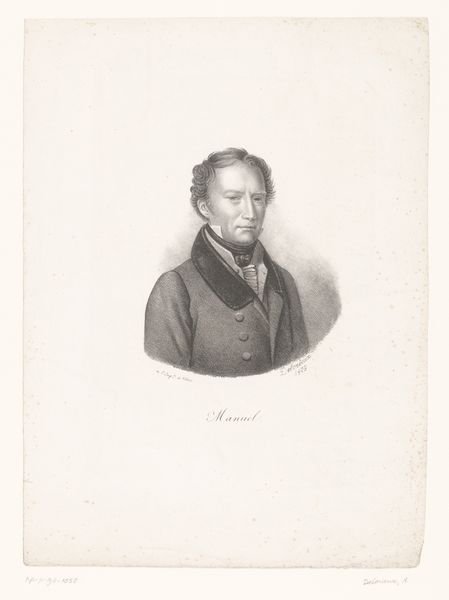
drawing, graphite, engraving
#
portrait
#
pencil drawn
#
drawing
#
pencil sketch
#
graphite
#
engraving
#
realism
Dimensions: height 245 mm, width 160 mm
Copyright: Rijks Museum: Open Domain
Curator: Today we're looking at a portrait drawing dating from between 1842 and 1887, held here at the Rijksmuseum. The work is titled "Portret van Adrianus van Herwaarden," and it’s credited to Carel Christiaan Antony Last. Editor: Oh, wow. My first impression is a certain severity—the stark monochrome, the formal attire… it almost feels like a character study, rather than just a likeness. Curator: Indeed. The portrait is rendered with graphite and engraving, exhibiting remarkable precision in its linework. Notice how Last employs hatching and cross-hatching to model form and create tonal variations across the sitter’s face and clothing. Editor: You can really see that textural difference—that slight scratchiness around the coat contrasting with the smoother planes of his face. It gives him depth, makes him feel real, not just some idea of a person. There’s even a faint blush, as though he was alive right then and there. Curator: Absolutely. And this dedication to realism—the capturing of minute details and textures—is key here. The artist pays close attention to the fall of light, delineating every wrinkle and contour to portray a distinct individual. This is not just representation but an almost photographic effort to capture a moment in time. Editor: I love that kind of commitment—the painstaking craft. It almost feels devotional. But for all that attention to detail, I keep getting drawn back to the eyes. They have a peculiar liveliness. Curator: Agreed. They serve as a point of visual access, injecting some subjectivity into the composition. It also reflects contemporary trends in portraiture—a focus on psychological depth along with accurate representation. Editor: It is interesting, isn’t it? To think that, centuries later, we’re still finding layers in what appears at first to be quite a formal piece. There is indeed a quiet complexity to it. Curator: I would say that it provides valuable insight into both artistic and cultural sensibilities of the time, so I hope our visitors can appreciate its unique quality and detail.
Comments
No comments
Be the first to comment and join the conversation on the ultimate creative platform.


